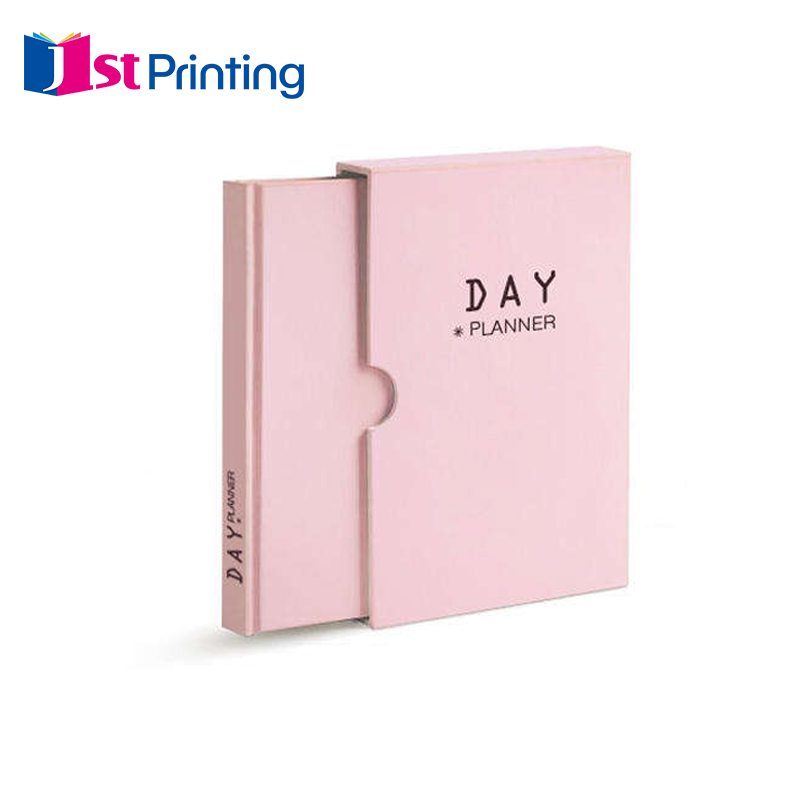Creare Imballaggi Sostenibili che Si Distinguono
Comprendere l'imballaggio sostenibile
L'imballaggio sostenibile comporta l'uso di materiali e processi che riducono al minimo l'impatto ambientale massimizzando al contempo la funzionalità dell'imballaggio. A differenza dei materiali di imballaggio tradizionali, le opzioni sostenibili sono progettate per ridurre i rifiuti ed essere ecologicamente responsabili. Essi possono includere sostanze biodegradabili, contenuti riciclati e materiali innovativi come le bioplastiche, che sono derivate da fonti vegetali rinnovabili e si degradano molto più rapidamente rispetto alle materie plastiche convenzionali.
Nel corso degli anni, nel settore degli imballaggi si è registrato un significativo cambiamento verso la sostenibilità, trainato dalla crescente consapevolezza dei problemi ambientali. Con l'aumento della consapevolezza ambientale delle imprese e dei consumatori, è cresciuta la domanda di soluzioni di imballaggio sostenibili. Questa evoluzione riflette un impegno più ampio verso la gestione ambientale, con i mercati globali che ora danno la priorità a soluzioni di imballaggio ecologiche.
Il ruolo dei packaging sostenibili nella riduzione dei rifiuti e nella conservazione delle risorse è fondamentale. Riducendo l'impronta di carbonio dei processi di imballaggio e utilizzando materiali riciclabili, le imprese possono avere un impatto significativo sulla sostenibilità delle loro operazioni. L'imballaggio sostenibile non solo favorisce la conservazione delle risorse, ma riduce anche l'inquinamento e l'accumulo di rifiuti, contribuendo a un pianeta più pulito e sicuro per le generazioni future.
Caratteristiche chiave di un imballaggio sostenibile accattivante
Per creare imballaggi sostenibili che si distinguano, è fondamentale capire le migliori pratiche per la selezione dei materiali. Le scelte includono spesso opzioni biodegradabili come i funghi e gli imballaggi di carta, materiali riciclati e risorse rinnovabili come lana e alghe. Questi materiali devono essere scelti in base alla loro capacità di ridurre l'impatto ambientale, come ad esempio ridurre l'impronta di carbonio e ridurre i rifiuti. Per esempio, il fungo, prodotto con micelio, offre una soluzione compostabile che ritorna in sicurezza nella terra, mentre la carta riciclata può subire numerosi cicli nel processo di riciclo, mantenendo la qualità e la funzionalità.
Gli elementi di design svolgono un ruolo importante nel rafforzare l'attrattiva e l'eco-friendliness degli imballaggi. Un design premuroso non comprende solo forme e stili che attirano l'occhio del consumatore, ma anche caratteristiche che permettono di utilizzarli e smaltirli facilmente. I progetti innovativi come gli imballaggi a base di micelio a misura o i prodotti in carta stampati in varie forme non servono solo a scopi funzionali, ma sono anche in linea con le pratiche sostenibili, garantendo un uso minimo di materiali e un'efficiente riciclabilità. Questi progetti contribuiscono a colmare il divario tra estetica attraente e responsabilità ambientale.
L'impatto psicologico degli imballaggi sostenibili risiede spesso nella loro estetica visiva, nei colori e nella grafica. I marchi possono sfruttare i toni terrestri e i colori verdi per trasmettere la loro eco-compassionevolezza e l'impegno verso la sostenibilità, creando così un legame emotivo con i consumatori eco-consapevoli. Grafici che evidenziano gli attributi sostenibili del prodotto rafforzano ulteriormente questa connessione, fornendo una narrazione che parla di responsabilità aziendale e di gestione ambientale. Utilizzando efficacemente i colori e gli indizi visivi, i marchi possono aumentare la fedeltà dei consumatori e attirare l'attenzione sui loro sforzi di sostenibilità.
Incorporazione di materiali ecologici
Le bioplastiche rappresentano un passo rivoluzionario verso un imballaggio sostenibile grazie alla loro biodegradabilità e alle loro origini rinnovabili. Realizzati con sostanze naturali come l'amido di mais, riducono significativamente l'impatto ambientale rispetto alle plastiche tradizionali derivate da combustibili fossili. Per esempio, le bioplastiche riducono le emissioni di carbonio fino al 70% durante la produzione. Ciò le rende una formidabile alternativa nella ricerca di mitigare il persistente problema di inquinamento associato alle materie plastiche convenzionali.
Oltre alle bioplastiche, materiali riciclabili come vetro, alluminio e carta svolgono un ruolo fondamentale nei packaging ecocompatibili. Il vetro può essere riciclato a tempo indeterminato senza perdita di qualità, e l'alluminio vanta un tasso di riciclaggio di circa il 75% negli Stati Uniti. L'utilizzo di tali materiali riduce la domanda di risorse vergini, consentendo un processo ciclico che giova sia alle industrie che all'ecologia.
Anche soluzioni innovative come il confezionamento di funghi e alghe marine stanno guadagnando terreno. Le confezioni di funghi, fatte di micelio, sono state utilizzate con successo da aziende come Ecovative per creare contenitori ecologici che si decompongono naturalmente. Le alghe marine offrono un'altra via promettente: aziende come Notpla stanno sviluppando imballaggi non solo biodegradabili ma anche commestibili. Questi progressi dimostrano una crescente tendenza verso materiali veramente sostenibili per l'imballaggio, offrendo alternative promettenti per le imprese impegnate nella responsabilità ambientale.
Esempi di successo di imballaggi sostenibili
Diversi marchi stanno guidando la battaglia per l'imballaggio sostenibile, rimodellando la loro presenza sul mercato e fissando gli standard del settore. Per esempio, Condimenti celesti la Commissione ha compiuto progressi significativi integrando imballaggi ecologici. Le loro scatole da tè sono prodotte con il 35% di cartone riciclato post-consumo, con involucri interni realizzati con materiali biodegradabili. Questa dedizione alla sostenibilità risponde bene ai clienti, rafforzando la loro reputazione e riducendo l'impatto ambientale. Analogamente, Inclinazione , azienda di prodotti per la cura del corpo e la pulizia, ha innovato con l'imballaggio dei suoi prodotti in contenitori sfusi che utilizzano fino all'80% in meno di plastica rispetto a contenitori di dimensioni simili, migliorando così le proprie credenziali di sostenibilità sul mercato.
Gli studi di casi evidenziano i benefici tangibili e le trasformazioni ottenute attraverso imballaggi sostenibili. Prendi - Il Montezuma's. , ad esempio, questo produttore di cioccolato con sede nel Regno Unito ha convertito tutti gli imballaggi dei prodotti in materiali riciclabili o biodegradabili. Hanno cambiato i loro imballaggi da plastica a barattoli di vetro e cartone riciclabile, mostrando sostanziali benefici ambientali e una migliore immagine del marchio. Acqua in scatola la Commissione ha proposto un altro caso convincente, avendo passato dalle tradizionali bottiglie di plastica alle scatole di cartone riciclabili al 92% a base vegetale, migliorando notevolmente il loro impatto ecologico. Questi esempi evidenziano come le imprese possano passare con successo a pratiche sostenibili, ottenendo vantaggi ambientali e di mercato.
Prodotti da considerare per imballaggi sostenibili
Una considerazione fondamentale per l'imballaggio sostenibile è l'integrazione di prodotti ecologici progettati per l'uso quotidiano, come pianificatori e calendari. Scegliere pianificatori progettati per una gestione efficiente del tempo può contribuire alla sostenibilità, specialmente quando questi pianificatori sono realizzati con materiali riciclati, riducendo al minimo la loro impronta ecologica. Inoltre, i libri elettronici e i libri ecologici offrono un'alternativa sostenibile ai libri tradizionali. La loro natura digitale elimina la necessità di carta, riducendo così la deforestazione e la produzione di rifiuti. Infine, i calendari mensili svolgono un ruolo vitale nel promuovere l'organizzazione mantenendo la consapevolezza ambientale. Questi calendari, spesso riciclabili e realizzati con materiali sostenibili, aiutano le persone a pianificare i loro orari senza sentirsi in colpa di aver contribuito a danneggiare l'ambiente.



La scelta di questi prodotti non solo favorisce pratiche sostenibili, ma arricchisce anche la vita quotidiana con alternative ecologiche.
Suggerimenti per l'implementazione di soluzioni di imballaggio sostenibili
L'attuazione di soluzioni di imballaggio sostenibile inizia con la valutazione delle attuali strategie di imballaggio per individuare le aree pronte per il miglioramento. Le imprese dovrebbero effettuare un'analisi approfondita per identificare le inefficienze, come l'uso eccessivo di materiali o componenti non riciclabili. Questa valutazione consente alle imprese di semplificare i loro processi di imballaggio e di rafforzare la responsabilità ambientale. Risolvendo questi problemi, le imprese possono non solo ridurre gli sprechi, ma anche ridurre i costi e migliorare l'efficienza operativa.
La sperimentazione di materiali sostenibili è un altro passo fondamentale per il passaggio a imballaggi ecologici. Le imprese sono incoraggiate a sperimentare prototipi che utilizzano alternative sostenibili come le materie plastiche biodegradabili o i materiali riciclati. L'approvvigionamento responsabile di questi materiali da fornitori certificati garantisce l'integrità della catena di approvvigionamento contribuendo allo stesso tempo agli obiettivi ambientali. Le imprese possono ottenere un vantaggio competitivo adottando in anticipo materiali verdi, poiché i consumatori investono sempre più in pratiche ecologiche.
L'educazione dei consumatori sulle pratiche efficaci di riciclo aggiunge un livello di responsabilità che può amplificare gli sforzi di sostenibilità. Fornendo istruzioni chiare sull'eliminazione degli imballaggi e collaborando con programmi locali di riciclo, le imprese possono promuovere una base di consumatori informati. Questo approccio proattivo non solo rafforza la fedeltà al marchio allineandosi ai valori dei consumatori eco-consapevoli, ma contribuisce anche positivamente alla comunità e all'ambiente. Attraverso questi sforzi congiunti, le soluzioni di imballaggio sostenibili possono diventare parte integrante della responsabilità delle imprese e del coinvolgimento dei consumatori.
Conclusione: il futuro degli imballaggi sostenibili
La tendenza verso l'imballaggio sostenibile continua a guadagnare slancio, promettendo benefici a lungo termine sia per le imprese che per l'ambiente. Questo movimento incoraggia l'innovazione e il coinvolgimento attivo dei consumatori, garantendo lo sviluppo di soluzioni di imballaggio più ecologiche ed efficienti. I leader e le aziende sono invitati ad abbracciare questo cambiamento, promuovendo un futuro in cui la sostenibilità degli imballaggi non è solo un'opzione, ma una pratica standard in tutti i settori.















 ONLINE
ONLINE